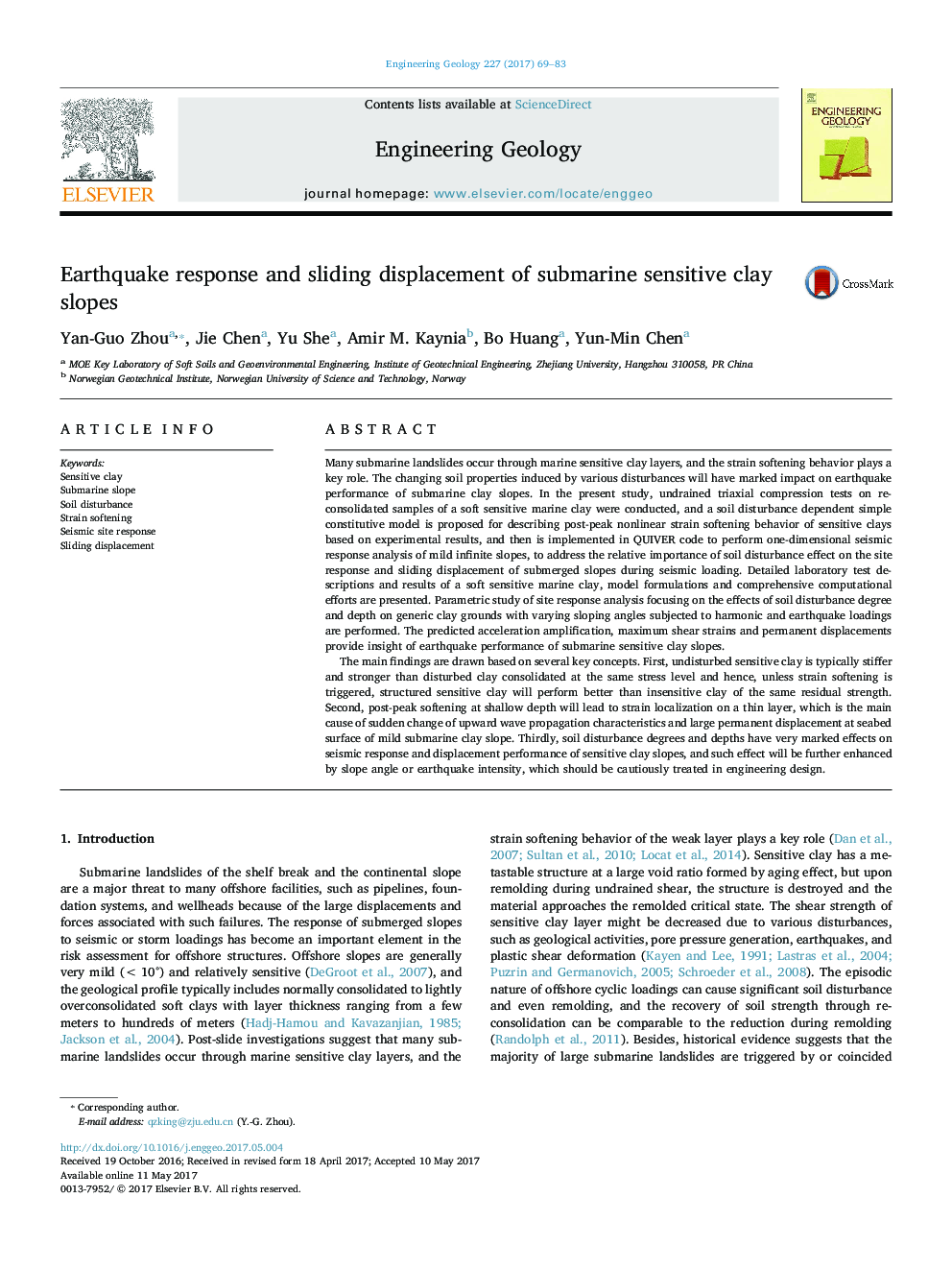| Article ID | Journal | Published Year | Pages | File Type |
|---|---|---|---|---|
| 5787457 | Engineering Geology | 2017 | 15 Pages |
Abstract
The main findings are drawn based on several key concepts. First, undisturbed sensitive clay is typically stiffer and stronger than disturbed clay consolidated at the same stress level and hence, unless strain softening is triggered, structured sensitive clay will perform better than insensitive clay of the same residual strength. Second, post-peak softening at shallow depth will lead to strain localization on a thin layer, which is the main cause of sudden change of upward wave propagation characteristics and large permanent displacement at seabed surface of mild submarine clay slope. Thirdly, soil disturbance degrees and depths have very marked effects on seismic response and displacement performance of sensitive clay slopes, and such effect will be further enhanced by slope angle or earthquake intensity, which should be cautiously treated in engineering design.
Keywords
Related Topics
Physical Sciences and Engineering
Earth and Planetary Sciences
Geotechnical Engineering and Engineering Geology
Authors
Yan-Guo Zhou, Jie Chen, Yu She, Amir M. Kaynia, Bo Huang, Yun-Min Chen,
